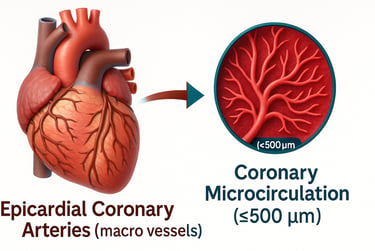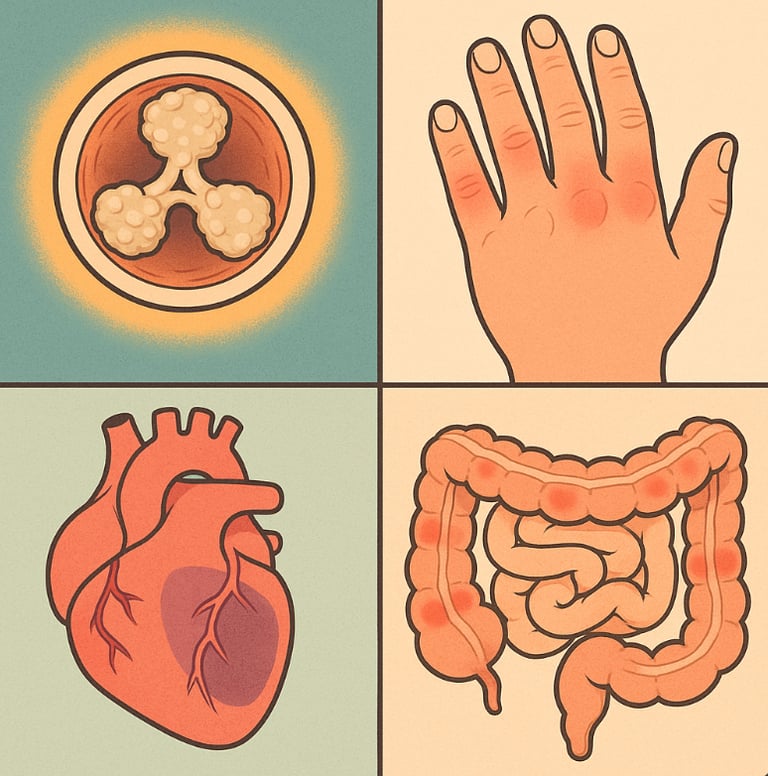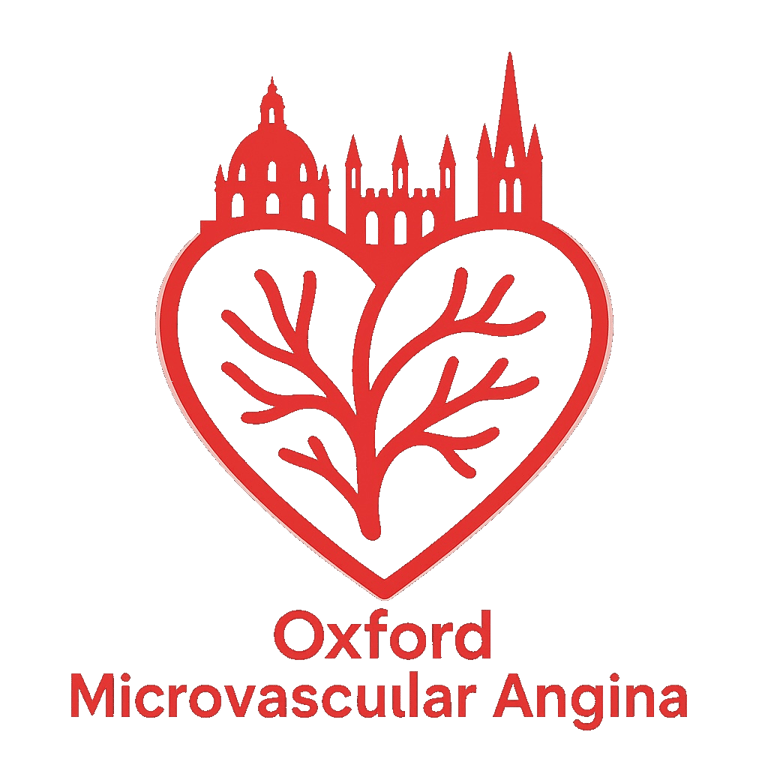Microvascular angina is a condition caused by dysfunction in the small blood vessels of the heart, known as the coronary microvasculature (< 500 micron in diameter; e.g < 1/1000th of mm!!).
These vessels usually transport blood to the heart muscle and can dilate during exercise by increasing the amount of blood going to the heart even 4-5 fold.
In people with microvascular angina, the coronary microvasculature fails to dilate or can even constrict, limiting blood flow to the heart. The consequence imbalance between increased oxygen demand and insufficient supply causes angina.


What is Microvascular Angina?
Angina is not a disease, but a symptom, and it refers to the sensation of gripping discomfort, heaviness, or tightness experienced in the middle of the chest, typically during physical activities. It can radiate towards the arm (typically left) or the jaws.
Angina is caused by an imbalance between the oxygen demand of the heart (which increases during physical activities) and the oxygen supply via the vessels feeding the heart (e.g. the coronary circulation). This imbalance in technical terms is referred as Ischaemia.
Shortness of breath sometimes can be interpreted as an angina equivalent.
Typically, angina occurs when there is a narrowing or blockage in the large segments of the coronary arteries (epicardial coronary arteries).
These narrowing are typically caused by fatty deposits within the vessel wall (atherosclerotic plaques). Interventions like stent implants or bypass surgery address this type of condition.






What causes Microvascular Angina?
The same factors accounting for obstruction in the larger segment of the coronary arteries can predispose to microvascular dysfunction as well.
Namely, all the below can favour the occurrence of Microvascular dysfunction and Microvascular Angina
diabetes
arterial hypertension
smoking
low exercise
unhealthy diet
Equally, Microvascular Dysfunction can co-exist with or develop after clinical conditions such as
arterial hypertension
heart valve disease (aortic stenosis)
heart attack
cardiomyopathies
heart failure with preserved ejection fraction
inflammatory disease (rheumatoid arthritis, lupus, IBS)


Contact
Get in touch for expert consultation.
Connect
© 2025. All rights reserved.
